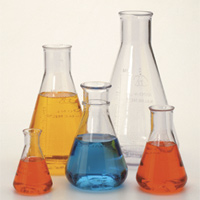In this day of confusing health reports and lax public policy, it’s nice to know that there are still some simple guidelines out there. From bread to yogurt, brief is best. You want whole, recognizable ingredients that don’t require a dictionary or chemistry degree to understand. Whether I’m teaching a cooking class for moms in Marin or teens from Chinatown, I always say: Look for short words and short lists.

How strange, then, to read the latest recipes by cutting-edge chefs. Sure, I’m used to restaurant menus that wax poetic about seasons and provenance, like a rambling culinary almanac, but to see the transformation of recipes into chemistry formulas is jarring.
“Add xanthonomas campestris….Place mixture in blender and add stabilizers….Cover tightly and flash freeze in liquid nitrogen.”
Picky diners in cities across the US demand heritage pork chop and organic eggs, raspberries driven not more than 50 miles and milk squeezed from a happily grazing cow. Meanwhile, chefs order increasingly obscure lab equipment and stock up on concentrated emulsifiers from industrial supply companies. After Martha Stewart brought laboratory design into kitchen cabinetry, I suppose this is the logical next step.
It’ll be interesting to see how much traction this has. Remember raw food? Some chefs swear that xanthum gum will soon sit next to cornstarch in your cupboard. I don’t doubt it.
– From a recent issue of Art Culinaire, Wylie Dusfresne’s recipe for Green Eggs and Ham, complete with helpful tips on ingredient sourcing.
– An article about “Atomic chefs” from Macleans.
– A Food & Wine interview with Richard Blais, chef of ONE.midtown kitchen in Atlanta, about molecular gastronomy.